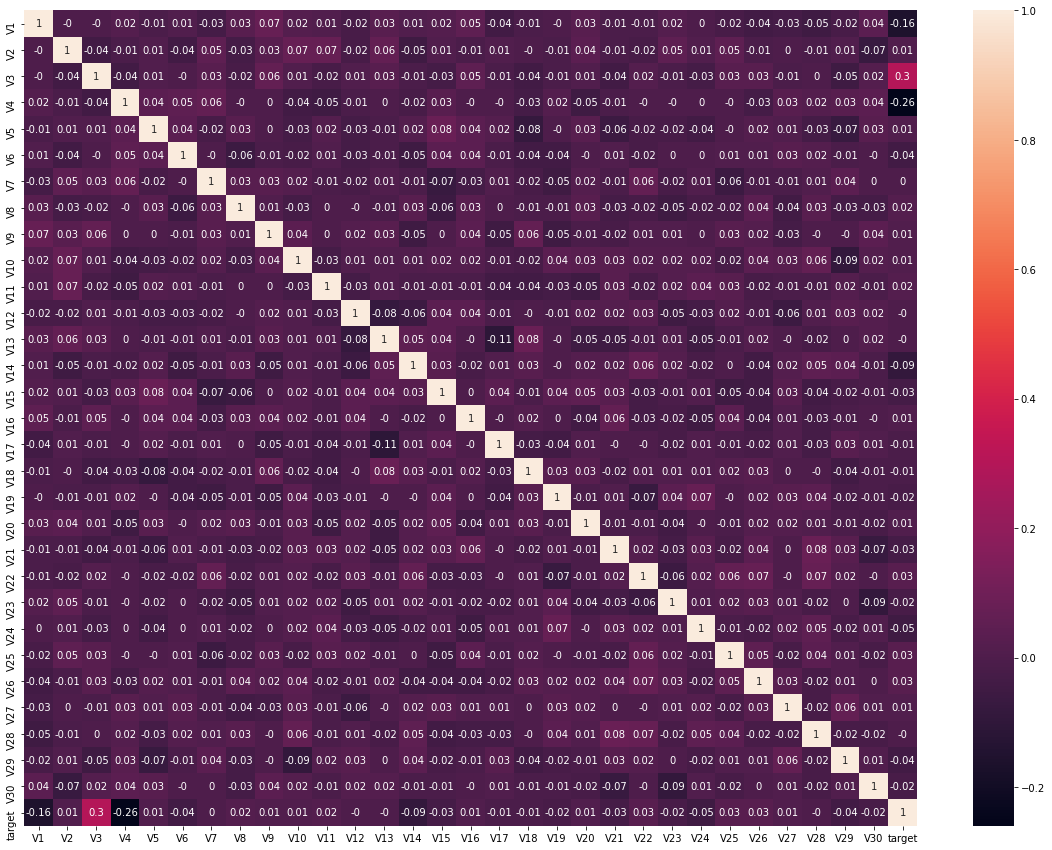Validation on a simulated dataset¶
In this Jupyter notebook we evaluate if UBayFS selects the correct features in a simulated dataset where we know the ground truth. The dataset was simulated in R according to the script provided under this link.
We simulate 30 features through a multivariate normal distribution, where each feature has mean 0 and standard deviation 1. The target \(y\) is generated through an additive model consisting of the first four features (\(f_0,f_1,f_2,f_3\)) plus some small error \(\varepsilon \sim \mathcal{N}(0,1)\):
\(y = -2\cdot \sin(2f_0) + f_1^2 + f_2 + \exp(-f_3) + \varepsilon\)
[1]:
import pandas as pd
import numpy as np
import seaborn as sns
import sys
import matplotlib.pyplot as plt
sys.path.append("../../src/UBayFS")
from UBaymodel import UBaymodel
from UBayconstraint import UBayconstraint
[2]:
data = pd.read_csv("./data/simulation/data.csv")
labels = pd.read_csv("./data/simulation/labels.csv")
The correlation matrix shows that \(f_0, f_2\) and \(f_3\) have a higher correlation with the target compared to the remaining features. Feature \(f_1\) has a low correlation with the target even though it is part of the target generation. Hence, we cannot assume that UBayFS selects \(f_1\) with a higher probability than the remaining features. the four features with the highest absolute correlation with the target are \(f_0, f_2, f_3,\) and \(f_{13}\).
[3]:
plt.subplots(figsize=(20,15))
data1 = data.copy()
data1["target"] = labels
sns.heatmap(np.round(data1.corr(), 2), annot=True, xticklabels=True)
[3]:
<AxesSubplot:>

[4]:
model = UBaymodel(data=data,
target = labels,
feat_names = [],
weights = [0.01],
M = 30, random_state=10,
method=[ "mrmr"],
nr_features = 4,
constraints = UBayconstraint(rho=np.array([np.Inf]),
constraint_types=["max_size"],
constraint_vars=[4],
num_elements=data.shape[1])
)
[5]:
result = model.train()
result[1]
[5]:
['f0', 'f2', 'f3', 'f13']
UBayFS with a max-size constraint of four features selects the expected features. Hence, this study shows that the method works well. By increasing the prior weight for feature \(f_1\) we can almost “force” the model to select the feature.
[6]:
weights = np.repeat(0.1,30)
weights[1] = 100
model.setWeights(weights)
[7]:
result = model.train()
result[1]
[7]:
['f0', 'f1', 'f2', 'f3']